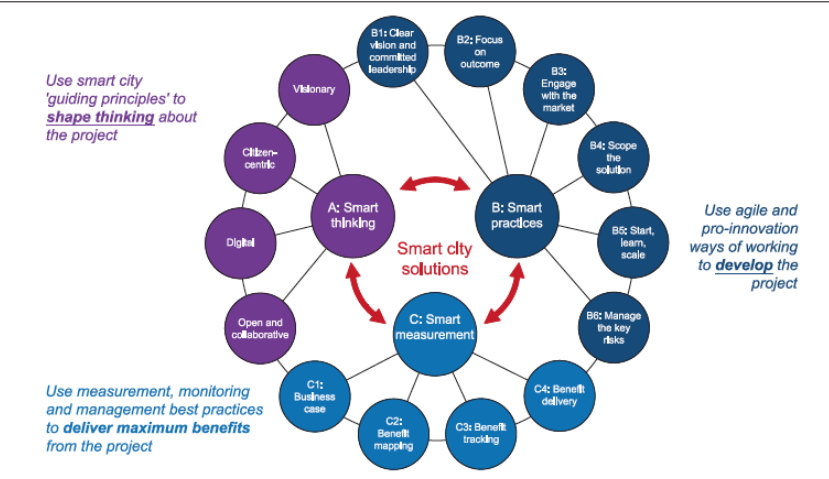How to make your Smart City project a success
#smartcity standards, #ISO37106, #PAS184, #Successful
Experienced smart city consultants will tend to have a good idea as to the chance of success of a smart city project just from the questions asked by the project team.
Questions Places Ask that mean they are probably not ready
Warning questions that mean the community is at a very immature stage include:
My leader wants to make an impact and have a very visual digital/smart project to show off to the population.
- Unless this investment is in digital infrastructures such as connectivity, skills uplift, innovation spaces and knowledge exchanges then it will likely be a white elephant. So steer clear.
I have been given a grant and I have plans to run 30 parallel projects across 6 different themes and they have to be complete in the next 36 months across the city.
- This is too ambitious, with not enough focus and way too many strands that will likely unravel rapidly. Successful smart communities start focused, small and sustainable. They embrace iterative improvement. They replicate across the city based on a success elsewhere in the city.
I have great contacts in the tech industry. They are looking for places to try something out and are offering 90% discounts! Time-limited offer we need to take advantage of.
- Top-down and industry-led projects are typically short-lived and great for marketing purposes. So they do have a role. But they often lack that key ingredient. Citizens. So end up being shelfware.. ‘aka not doing much’.
These answers are warnings signs of a troubled or soon to be troubled smart community project.
Consultant Questions seeking a great response
The questions I ask when discussing smart places and communities are this:
- Does your place embrace open data?
- Do you actively engage citizens with this open data?
- Do the community leaders and citizens agree on the outcomes that are being captured as open data?
- Are these outcomes constantly being refined and questioned as being relevant for the place?
A great response will go along these lines:
Q1: Does your place embrace open data?
A1: Absolutely, yes. Our community has an open data portal and active users across a number of different organisations and sectors interacting with the portal. Both consuming open data and creating new insights from the data and then posting this back to the portal.
Q2: Do you actively engage citizens with this open data?
A2: Our communities have active investigators and storytellers. Which combine to inform citizens on a regular basis. This includes as well, capturing feedback from citizens and ensuring this is fed into the decision making process.
Q3: Do the community leaders and citizens agree on the outcomes that are being captured as open data?
A3: We have a shared governance board that regularly meets and also runs engagement actions on social media and outreach activities in communities direct. These include information roadshows; digital displays in community meeting points (GP surgeries, schools, community halls, on the web). Outcomes are agreed by the community, with active ongoing voting and sentiment measurement through digital tools and social media platforms. Whilst not forgetting those not digitally connected.
Q4: Are these outcomes constantly being refined and questioned as being relevant for the place?
A4: At these meetings and direct engagements, a review of the information and trend analysis and whether expectations against the outcome are being realised is assessed. If not, then new outcomes are agreed or expectations re-set.
How to Fix the Gap
So quite a big gap. The question then is how to be more like the best behaved smart community versus the enthusiastic amateur? Use Smart City Standards. In particular embrace the sustainable smart communities model which is enshrined in ISO37106.
Along with the following PAS184 Guide to Successful Smart City Projects. See the circles image below. Which provides nine focus areas with each sub-divided again into a measurable element. With a clear statement of what ‘good looks like’. It is the measure of how close to that pass mark which informs a place as to what they need to do next.
